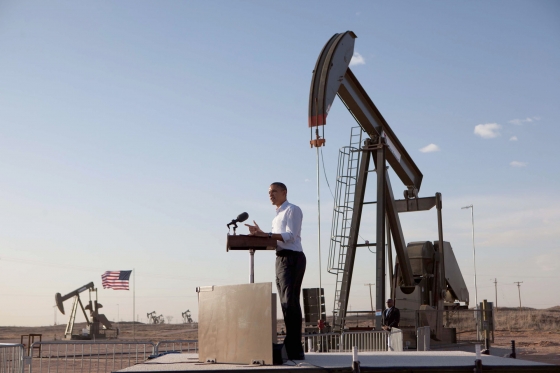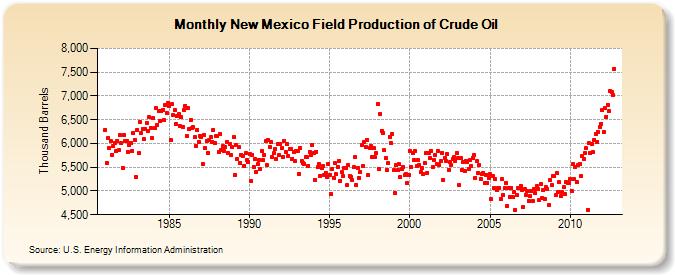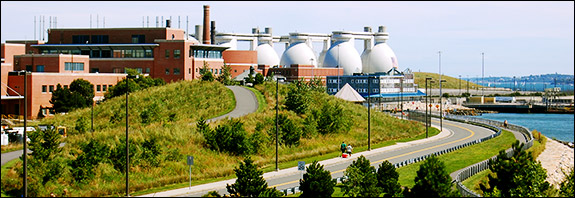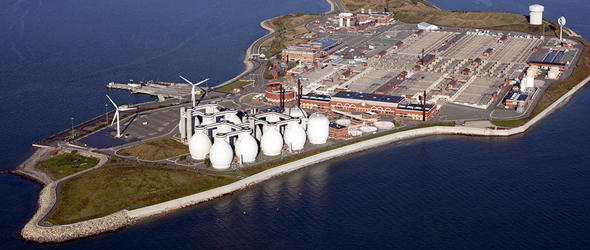Amid Roaring Demand, A U.S. City Plans to Triple Water Rates for Oil and Gas Customers
The recent oil and gas boom in the United States has been good business for the Carlsbad, New Mexico water department. Perhaps too good.

Brett Walton
Circle of Blue
On January 8, more than a year after the mayor asked industrial users to conserve water, the Carlsbad, New Mexico city council is weighing an economic tool to rein in water demand. The council will vote on a proposal to triple the water rate for oil and gas customers, thus creating some of the most expensive municipal water in the United States.
The proposed rate increase is the latest example of how the U.S. fossil fuels boom has disrupted established patterns of resource use, prompting new demand and giving rise to new scarcity from the sands of New Mexico to the hills of the Ohio River Valley and the badlands of North Dakota.
Demand is certainly up. But drought, for its part, is cutting into supply, adding stress to local water supplies that, in some cases, are nearing exhaustion. In Texas, where water levels in some rivers are too low to tap, energy companies are going farther afield and paying more to find willing sellers. In Pennsylvania this summer, a regional river basin commission suspended water withdrawals because of low stream levels.
“This is a harbinger of things to come,” Kenneth Medlock, a fellow in energy and resource economics at Rice University’s Baker Institute, told Circle of Blue. “I think water rates will increase in a major way across the country in the next year just because of demand.”
Carlsbad, population 26,000, sits at the western edge of the oil-rich Permian Basin. The city sells water to companies that have used a one-two punch of hydraulic fracturing and horizontal drilling to release a petroleum bounty tucked in layers of sedimentary rock thousands of feet underground.
The two production techniques, and the millions of gallons of water they require for each oil well have also sent a gusher of money into the city coffers. Revenues from Carlsbad’s two water systems have doubled since 2009, and they are projected to rise another 15 percent this year.
But even the bonanza has limits. Relentless demand for water is putting pressure on the city’s primary drinking water aquifer.
“The municipal water system cannot support both the growth in domestic water consumption and the large volume demands of the oil and gas industry,” according to the ordinance up for a vote on Tuesday.
Making Water Cost-Prohibitive
Geography dictates where and how energy companies acquire water for hydraulic fracturing, or fracking. Energy companies operating in the American West, where concerns about water supply are greatest, purchase water from farmers, municipalities, or from depots that sell untreated water in bulk. Companies can also apply for state permits to withdraw water from rivers or aquifers, usually free of charge.
Carlsbad owns and operates two water systems: a municipal system that draws from the nearby Capitan aquifer, and the Double Eagle system some 60 miles to the northeast, which is a major water depot for this oil-rich corner of the state. (Eddy County, home to Carlsbad, and adjacent Lea County, where the Double Eagle wells are located, produce 94 percent of the oil in New Mexico, the country’s fifth-largest oil producing state.)
–Kenneth Medlock
Baker Institute, Rice University
In September 2011 the Carlsbad city council established a new “industrial” rate for oil and gas customers using the municipal system, alongside existing residential and commercial rates. A separate ordinance, passed that month, stated that the city would work with industrial users to conserve water and to use non-potable supplies when technologically possible.
The industrial rate applies only to treated water sold from the municipal system. Water from the Double Eagle system is sold for $US 35.71 per 1,000 gallons.
But the original industrial rate, set at $US 23.81 per 1,000 gallons, apparently has not been sufficient to cut demand because it is still cheaper than Double Eagle water. The industrial rate increase the city council is now considering would apply only to water from the municipal system.
City officials would not speak with Circle of Blue about their decision to raise rates. The city administrator did not return a series of phone and email messages left over a two-week period, and the water department referred all questions to the city administrator. Calls to the city council also were not returned.
A member of the city’s board of water and sewer commissioners said that he wanted to make it cost-prohibitive for industrial customers to use municipal water, according to the minutes of a November 2012 board meeting when the rate increase was discussed. The commission endorsed the move.
In an opinion column in the Current-Argus newspaper, Carlsbad Mayor Dale Janway wrote that the city pumped more water in 2011 than it had rights to.
“There’s just not enough supply to accommodate all of the Carlsbad’s citizens and provide water to most of the oil and gas companies in the region,” Janway wrote in support of the rate increase. “We want Carlsbad to be able to grow, but that can’t happen if the water supply intended for domestic use is depleted.”

To What Effect?
If the ordinance passes, oil and gas customers will pay $US 71.43 per 1,000 gallons, or $US 23,272 per acre-foot for water from the municipal system. The minimum monthly charge will also swell, from $US 200 to $US 1,000. Residential customers in Carlsbad pay $US 1.06 per 1,000 gallons.
No comprehensive database for U.S. water prices exists, but the Carlsbad industrial rate would surely be some of the most expensive water in the country. Even so, it may not result in the desired effect.
“I don’t think it’s going to turn any producers away,” said Medlock, who mentioned that the drought has pushed water prices even higher than the Carlsbad rate for oil and gas customers fracking the Eagle Ford shale formation in southern Texas.
For another comparison, the Bureau of Reclamation, in its recent study of water supply and demand in the Colorado River Basin, estimated that a pipeline from the Missouri River to the metropolitan areas along Colorado’s Front Range would supply water for as much as $US 2,300 per acre-foot. And in northern Colorado, oil and gas companies signed a deal with the city of Greeley to lease surplus water for roughly $US 3,300 per acre-foot, according to the New York Times.
Wally Drangmeister, spokesman for the New Mexico Oil and Gas Association, an industry group, told Circle of Blue that such a large price might encourage innovative technologies that use less water or tap into non-potable water sources but that producers in that part of the state are aware of water scarcity issues.
Still, the magnitude of the proposed rate increase certainly raised eyebrows.
“It totally blew my mind,” said Drew Beckwith, a water policy analyst with Western Resource Advocates, a group that has written a report on water used for fracking. “I’ve rarely seen a water rate above 10 or 15 dollars [per 1,000 gallons],” he told Circle of Blue.
Regardless of how the Carlsbad proposal shakes out, the underlying pressures on water resources remain, not just in New Mexico but across the country, especially if 2013 is as dry as recent years.
“It boils down to supply and demand,” Medlock said. “Who’s the incumbent user and how much will they charge to release those rights?”
Brett writes about agriculture, energy, infrastructure, and the politics and economics of water in the United States. He also writes the Federal Water Tap, Circle of Blue’s weekly digest of U.S. government water news. He is the winner of two Society of Environmental Journalists reporting awards, one of the top honors in American environmental journalism: first place for explanatory reporting for a series on septic system pollution in the United States(2016) and third place for beat reporting in a small market (2014). He received the Sierra Club’s Distinguished Service Award in 2018. Brett lives in Seattle, where he hikes the mountains and bakes pies. Contact Brett Walton










Leave a Reply
Want to join the discussion?Feel free to contribute!